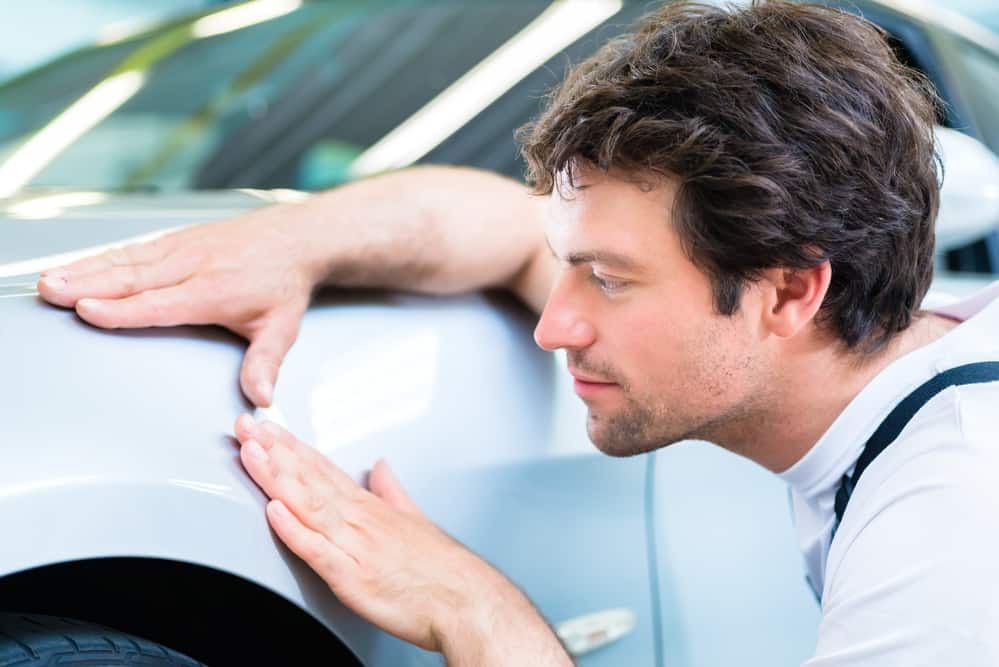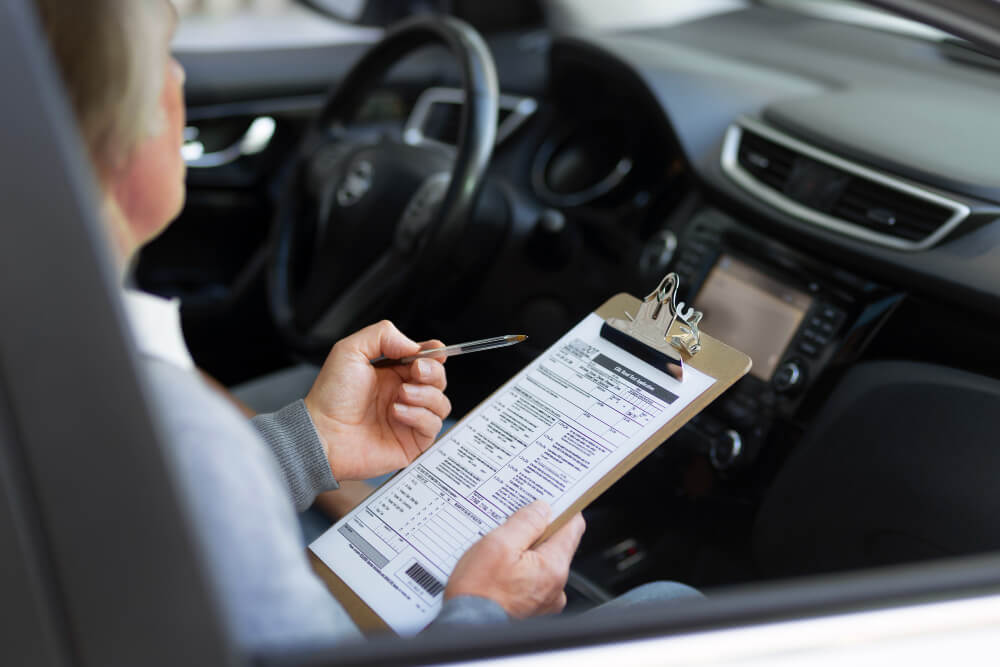No matter how diligently you take care of your car or truck, there’s always a chance that it will endure a dent or ding while being out in public. These unsightly marks can be caused by minor accidents, shopping carts, or even hailstorms, and they can be pretty frustrating to deal with as a car owner. When faced with such unsightly marks, car dent removal becomes a top priority for many.
While you do have the option of taking your vehicle to a body shop or a friendly local mechanic for repairs, their price quotes can often be exorbitant. According to Angie’s List, the cost of having a professional remove a one-inch dent from your vehicle typically falls in the range of $50 to $120. For larger dents, the expenses can be significantly higher.
Discover unbeatable special deals on our range of quality used cars, tailored to fit every budget!
You Can Do It Yourself
However, if you’re up for giving it a shot, you can often effectively fix your car’s dents yourself using affordable dent-removal tools. But before you dive in, it’s crucial to assess the damage and understand what you’re dealing with.
Assessing the Damage
To choose the right dent removal method, you need to evaluate the severity and type of damage inflicted upon your car. Dents can come in various sizes, depths, and locations, and these factors will determine the effectiveness of different repair techniques. Superficial dings that haven’t caused much damage to the paint are generally easier to tackle compared to larger, deeper dents.
By comprehending the extent of the damage, you can make an informed decision about the most suitable method for removing the dent.
6 DIY Methods to Fix Car Dents
If the dent is small and there’s no paint damage, and you have confidence in your abilities, you might want to try repairing it yourself. While none of these methods is guaranteed to work, they are undoubtedly worth attempting if your priority is to save money.
However, it’s crucial to exercise caution when attempting homemade fixes to prevent any further damage to your car. If your DIY efforts prove unsuccessful, remember that a specialist is just a phone call away, ready to assist you.
Without further ado, here are 6 commonly used techniques that you can explore:
1. Boiling Water Method for dented bumpers
If the dent is located on a plastic surface, such as a front or rear bumper cover, you can try using the boiling water method. The concept behind this technique is to pour boiling water over the dented area to make the plastic more flexible.
Here’s how to proceed:
- Boil water in a teapot, ensuring it reaches a sufficient temperature. Remember to wear rubber gloves to protect yourself from burns.
- Have a pot of cold water nearby, as you will need it later in the process.
- Ideally, you should have access to the backside of the dent. This will enable you to push the dent out effectively.
- Carefully pour the boiling water over the dented area, The heat from the water will soften the plastic, making it more flexible and easier to reshape.
- Once the dent has been successfully pushed out, pour cold water over the bumper. This will help cool and solidify the plastic, restoring its original shape.
2. Hair Dryer and Compressed Air
Another effective method to tackle a dent is by utilizing a hairdryer and compressed air in combination. This technique is particularly useful when you cannot access the dent from the inside.
Here’s how you can proceed:
- Start by using a hairdryer set to its highest heat setting. Direct the hot airflow onto the dent for a few minutes. The heat will cause the outer surface of the dent to expand.
- Once the area has been adequately heated, swiftly switch to a can of compressed air. Hold the can upside down and aim the nozzle at the dent.
- Spray the compressed air directly onto the dent. The sudden change in temperature, from hot to cold, can cause the metal to contract. This contraction may lead to the dent popping out.
3. The Plunger Method
You might be surprised to learn that a plunger, typically associated with plumbing issues, can also be a handy tool for restoring your car’s exterior to its original condition.
It’s important to note that this method works best for round dents that are small to medium in size. When attempting this dent removal technique, avoid using a regular toilet plunger or a “flange” plunger. Instead, opt for a flat/cup plunger that is typically used for unclogging sinks. Alternatively, there are specialized suction tools available specifically designed for dent removal.
To effectively employ this method:
- Ensure both the surface of your car and the plunger are wet with water. This moisture creates a strong seal and enhances suction.
- Position the plunger over the dent, aligning it as accurately as possible.
- Apply both pushing and pulling motions to the plunger. This action helps create suction and gradually pops the dent out.
- Continue the pushing and pulling motions until you hear or feel the dent popping out.
4. Dry Ice Method
An alternative method for releasing a dent from a car or truck involves the use of dry ice. Before attempting this method, it’s crucial to prioritize your safety by wearing appropriate hand protection when handling dry ice.
Here’s how you can proceed:
- Apply the dry ice directly to the dent, ensuring that the damaged area is covered. Rub the dry ice gently over the dent, allowing the extreme cold to interact with the metal.
- Hold the dry ice against the metal for several seconds, giving it enough time to cool the area and cause the metal to contract.
- Observe the dent closely and wait to see if it pops out spontaneously as a result of the cooling effect. If the dent doesn’t pop out immediately, you can repeat the process until you achieve the desired outcome.
5. Hammer Method
Using a mallet or hammer can be an effective method for removing medium to large-sized dents from your vehicle. For smaller dents, a hammer can also work well. However, it’s important to note that this technique only applies if you can easily access the dent from behind.
To use this method:
- Place a cloth or towel over the dent to protect the inside framework of your vehicle.
- Gently tap the center of the dent from the inside using the hammer or mallet.
- Start with light taps and gradually increase the force if needed, focusing on the center of the dent.
- Be careful not to hammer too hard or too quickly to avoid causing additional damage.
6. Buy a Dent-Repair Kit
Dent removal kits are available for purchase and offer a convenient solution for removing car dents. These kits come in various sizes, catering to both small and large dents. They include specialized tools explicitly designed for dent removal, similar to the equipment used by professionals.
By using a dent removal kit, you can access professional-grade tools and increase your chances of successfully repairing dents on your own.
Professional Dent Repair
When you’re uncertain or facing complex dents, it’s best to seek professional assistance.
Although it may come at a higher cost, experienced auto body technicians possess the necessary expertise, tools, and knowledge to accurately assess the damage and suggest the most appropriate repair method.
Before hiring a specialist, it’s advisable to check their online reviews. Reading feedback from previous customers can give you insights into the quality of their work. Additionally, it’s recommended to compare prices by contacting at least three different vendors to ensure you get the best value for your money.
Final Thoughts
Remember, no need to rush when it comes to banishing those dents! It’s a multi-step process that requires some time and finesse. If you work too quickly or go all Hulk on the metal, you might end up stretching it in the wrong direction, and that’s not a fix you want to attempt yourself. So, take it easy and be patient.
Each of the methods mentioned earlier has the potential to pull or push out your dent or ding without requiring you to spend money on professional repairs. Give them a shot and see if you can work some magic.
If you succeed, you definitely deserve a proud pat on the back. But hey, if things don’t go as planned or your car still looks wonky or has paint damage, don’t beat yourself up about it. It was worth a try, and you can still choose to swallow your pride, open your wallet, and entrust the job to a trained professional.
Explore our Certified Pre-Owned collection, where each car promises the quality of new with the value of used!




